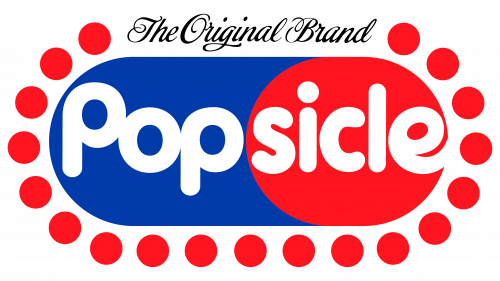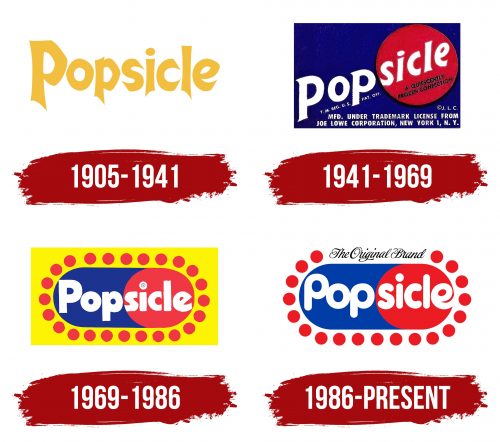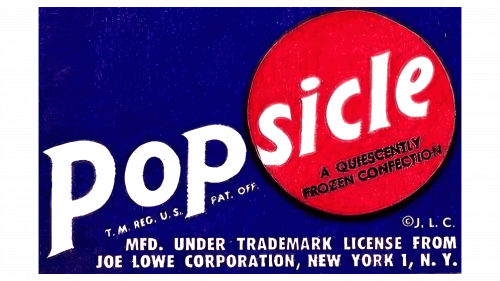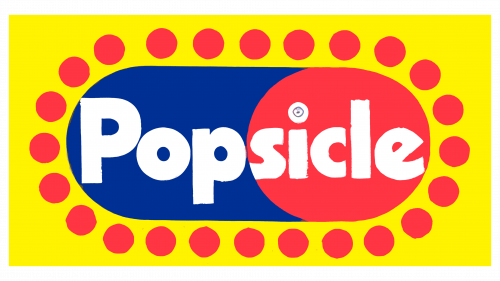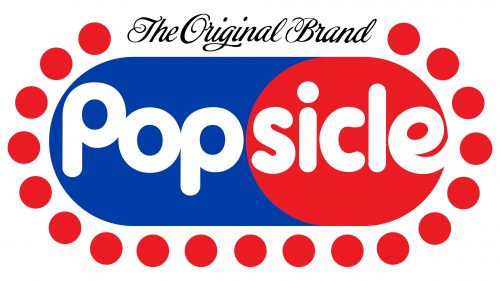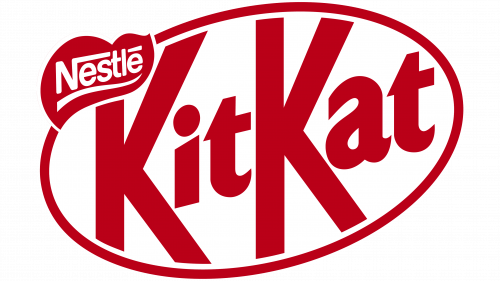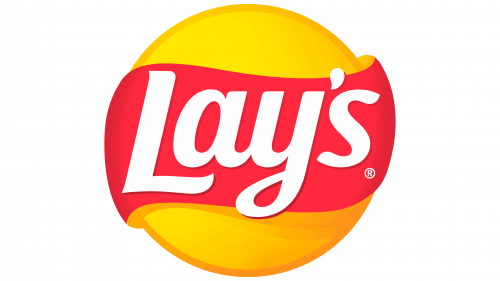The Popsicle logo evokes a sense of fun and joy. The emblem, created in bright colors, grabs attention and instantly lifts the mood. Its circular shape symbolizes friendliness and invites everyone to enjoy a delicious treat. The vibrant shades remind us of the company’s various flavors, making the selection appealing to all ages. The logo also carries the idea of togetherness, as if inviting friends and family to gather and enjoy sweet treats that make every moment special.
Popsicle: Brand overview
On a chilly night in 1905, 11-year-old Frank Epperson of Oakland, California, accidentally left a glass of water, sugar, and a stirring stick on his porch. This was the beginning of the Popsicle story. In the morning, he found that the liquid had frozen around the stick, forming a delectable frozen treat. After naming his unintentional creation “Epsicle” after his last name, Epperson started producing them for his pals.
However, Epperson didn’t decide to patent his creation until 1923. By then, he had renamed it “Popsicle,” a play on the words “pop” (from the sound the frozen delicacy produced when it was taken out of the mouth) and “icicle.” After receiving the patent in 1924, Epperson began extensively manufacturing and retailing frozen treats.
Epperson sold the rights to the New York-based Joe Lowe Company in 1925. This choice allowed the product to be produced and distributed in large quantities. The Joe Lowe Company started actively marketing the product and increased the variety of flavors and shapes available.
The brand experienced substantial expansion during the 1930s. Because it only cost five cents, the product maintained its popularity even during the Great Depression. Double Popsicles with two sticks were introduced during this period, increasing the treat’s appeal to kids by enabling them to split and share it with a buddy.
The company debuted Fudgsicle, a chocolate-flavored ice cream on a stick, as a new product in 1939. This product line extension was well received and quickly rose to the top of the brand’s popularity.
Sugar limitations restricted production during World War II. However, sales rapidly increased after the war, and the company saw substantial expansion in the 1950s.
The brand kept innovating in the 1960s, launching new flavors and forms. A popular invention was the Creamsicle, a vanilla ice cream topped with flavored ice.
Good Humor, controlled by Unilever, purchased the brand in 1989. The distribution and marketing of the product could now be expanded thanks to this acquisition.
Additional flavor and format innovations defined the 1990s and 2000s. The company started manufacturing goods for adult consumers, including low-sugar and low-calorie choices.
The brand commemorated its 105th anniversary in 2010 with a marketing effort to remind consumers of the product’s extensive heritage and significance in American society.
A brand-new product line was introduced in 2011 under the name “Popsicle Shots.” This invention provided bite-sized, spherical, stick-free frozen delights that could be consumed right out of the container. “Popsicle Shots” were created with an older demographic in mind, providing a fresh way to consume the classic product.
In 2013, a line of sugar-free options was introduced. This program met the increased demand from consumers for healthier dessert choices. Though they were lower in calories and sugar, the new goods still had the iconic flavor, appealing to parents worried about their kids’ eating.
2015 saw a redesign, which included altering the logo and packaging. With the new look, the brand was intended to appeal to a younger demographic while still being recognizable and having a nostalgic quality that older customers valued.
2016 was a year of taste explorations with uncommon flavors. Limited-edition products featuring exotic flavors like dragon fruit and passion fruit were released. This campaign aimed to draw in customers looking for novel flavors and bolster the brand’s standing as a cutting-edge pioneer in the frozen dessert industry.
“Popsicle Flavor Makers” is an interactive web campaign introduced in 2019. Customers could vote on new flavors through this initiative and submit suggestions for future products. This innovation helps the company better understand customer preferences while increasing consumer interaction.
2020 saw the release of the “Popsicle Fun Finder” mobile app, which helped the brand increase its online visibility. The app allows users to play interactive games, discover the closest stores carrying their products, and get special deals and discounts.
2021 a new product line was introduced under “Fruit Twisters.” This creative series created a distinctive fusion of tastes and consistencies by combining traditional fruit-flavored ice with a creamy smoothness. Fruit Twisters aimed to attract customers seeking frozen sweets with more intricate and captivating flavors.
The company commemorated the patent’s 100th anniversary in 2022. In honor of this momentous occasion, a limited series known as the “Century Collection” was introduced, featuring reissues of beloved flavors and packaging styles from several decades. Customers were interested in this collection, particularly those who appreciated the brand’s retro appeal.
The same year, the company launched a line of adult products named “Cocktail Inspired,” further increasing its market share. This line of non-alcoholic drinks featured flavors like “Mojito” and “Piña Colada,” inspired by popular cocktails.
The year 2023 began with the release of the creative application “Customizer.” Customers could design distinctive flavors using various ingredients and combinations on this online platform. The opportunity to make limited runs of the most well-liked user contributions dramatically increased customer engagement and brand loyalty.
Additionally, the company expanded its online presence by opening a store that would ship frozen goods directly to customers. This invention was especially crucial for increasing product availability in areas where the brand had little physical presence.
The company has increased its social media presence, interacting with younger consumers and generating viral content on sites like Instagram and TikTok.
Meaning and History
What is Popsicle?
It is an American brand of ice cream and frozen treats owned by Unilever. The brand name has become synonymous with ice cream, and “popsicle” is often used as a generic term for any frozen treat on a stick. The company offers frozen treats, including classic two-stick popsicles, single-stick varieties, and more complex frozen treats. The brand is known for its bright colors and fruity flavors, with cherry, orange, grape, and lime being popular. Over the years, the company has expanded its product line to include sugar-free options, creamy pops, and pops with characters that kids love. The brand’s treats are popular for their refreshing flavor, especially during the hot summer, and are often associated with childhood nostalgia. The company continues to innovate with new flavors and formats while maintaining its status as the favorite frozen treat brand in the United States.
1905 – 1941
The first Popsicle logo had a rather strict appearance, with a black rectangle as its base. This color likely symbolized night, the key to the product’s invention. On that night, 11-year-old Frank Epperson accidentally left a mixture outside on the back porch, and by morning, it had frozen, eventually leading to the creation of the frozen treat.
Although the idea for the ice pop originated in 1905, the logo appeared much later, when Epperson had children and decided to bring the frozen juice to market. The yellow lettering on the black background stood out brightly and clearly, and the pointed ends of the letters resembled ice crystals, emphasizing the frozen nature of the product.
The frozen treat was initially intended to be named “Eppsicle” after the inventor’s last name. Still, Epperson’s children insisted on a friendlier name, “Popsicle,” replacing part of the last name with “pop,” which added a family-oriented and warm character to the brand.
1941 – 1969
1941, the Popsicle logo changed after Joe Lowe Corporation acquired the brand. The dark blue background replaced the black, creating a more pleasant atmosphere associated with water and freezing. The blue shade symbolizes coldness and freshness, making the emblem appealing and calming.
A red circle, reminiscent of the product’s shape, was added to the top of the logo. This color highlights the rich flavor and hints at the presence of fruit ingredients. The red circle symbolizes a rising sun, reflecting the brand’s popularity and success. A descriptive inscription was added to the circle, indicating that Popsicle is a frozen confectionery treat.
The brand name was adapted to the new composition: the word “Pop” remains on the blue background, while “sicle” is placed inside the red circle. The gradual reduction in the size of the letters creates an upward movement effect, symbolizing the brand’s ambition to reach new heights.
At the bottom of the emblem, information about the legal aspects of the product’s release is included, emphasizing Joe Lowe Corporation’s rightful ownership of the ice cream production. This inscription adds confidence in the quality and authenticity of the product, making the logo visually appealing and informative.
1969 – 1986
When Consolidated Foods Corporation acquired the Popsicle brand in 1969, it underwent a rebranding. The new logo became bright and attractive while retaining key elements of the previous design.
The composition is based on a vibrant yellow background, creating a festive mood and drawing attention. A cold blue ice pop is turned toward the viewer, showcasing its bright red fruit filling. This visual accent highlights the product’s rich flavor and quality.
Surrounding the ice pop are red circles that seem to dance around the central element, emphasizing its uniqueness. These circles can be interpreted in various ways:
- As small portions of fruity sweetness are intended for consumers,
- As berries are used to make the juice for the ice pop,
- Or as ice chips cooling the product.
The ornament adds dynamism and livens up the image inside the dot of the letter “i,” a blue snowflake is depicted, symbolizing the cold and refreshing effect of the ice pop.
1986 – today
Since 1986, the logo has been updated to a more stylish and modern version. The background removal allowed the focus to shift to the main design elements. The rounded, smooth edges of the letters harmonize with the rounded shapes of the ice pop, creating a visually pleasing and balanced composition. The circles at the top of the logo were replaced with a cursive inscription that reads “Original Brand,” emphasizing the product’s long and rich history.
The design’s bright colors and clean lines point to time-tested recipes and high-quality ice cream, making the logo modern while maintaining a connection to the brand’s traditions.
